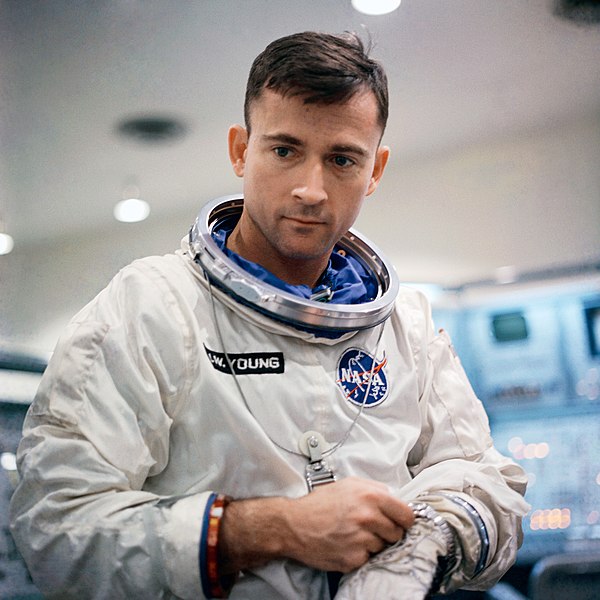Across the years, only a few humans have had the honor of being able to say that they walked on the moon – and John Watts Young is one of them. In 1972, he became the ninth man to walk on the Moon as the Commander of the Apollo 16 mission. However, his life has spanned much more than even this, and he truly is one of the most fascinating people within the entire history of NASA’s Astronauts Corps.
Born on September 24, 1930, he grew up in both San Francisco and Orlando. He stayed in Orlando until he graduated from the Orlando High School in 1948. Four years later, he earned his Bachelor of Science degree in aeronautical engineering, and joined the Scabbard & Blade national military honor society.
It was this degree that would help John Young become one of the most decorated engineers of his time. Having enlisted in the United States Navy, he completed a tour in the Sea of Japan during the Korean War. It was during this time in the Navy that Young would initiate his flight training. He showed immense adaptation in his flight training and in 1962, he actually set the record for time-to-climb in a F-4 Phantom II fighter jet. He retired from the Navy as a decorated Captain in 1976, with 25 years of military service behind him.

Having joined NASA in 1962, he was the first of the Astronaut Group 2 to actually fly in space when he replaced Thomas Stafford as the pilot of Gemini 3. Young caused controversy when he snuck a corned beef sandwich – Mission Commander Grissom’s favorite – onto the Gemini flight in 1965, which was the first manned flight of the craft. He presented the sandwich to a pleased crewmate but NASA was furious about the “contraband” and ordered Chief Astronaut Donald “Deke” Slayton to control his troops. While the Appropriations Committee meeting following the mission showed the seriousness of the incident, it didn’t seem to have damaged Young’s career as he came off with a reprimand and was in command of the Gemini 10 mission a year later, where he was joined by Michael Collins (whose second spaceflight took him to the Moon on Apollo 11 with Neil Armstrong and Buzz Aldrin).
Originally assigned as part of the backup crew for the second manned Apollo mission, both crews took part in the Apollo 7 mission in October 1968 after the fire of Apollo 1. That Apollo 7 mission, where Young was the backup Command Module Pilot, was commanded by no one less than Walter M. Schirra, who was the provider of that notorious sandwich mentioned earlier. Young went on to fly the Command Module himself as part of the Apollo 10 crew, the first crew to fly to the Moon. He also played a key role in the Apollo 13 problems, helping the team develop a procedure which eventually re-activated the Command Module.
Arguably his greatest achievement, though, was to be the commander of the Apollo 16 crew who landed on the Moon. He made three separate moon walks on April 21st, 22nd and 23rd, in 1972. He became the ninth person to ever walk on the Moon, and the first person to have been in space six times as he later was also Commander of STS-1 (the first space shuttle mission) and STS-9.
John Young worked with NASA in a wide variety of capacities until his retirement in December 2004, retiring at the age of 74. He published his autobiography, Forever Young, in 2012 and today still stands as one of the most inspirational figures space has ever seen.








